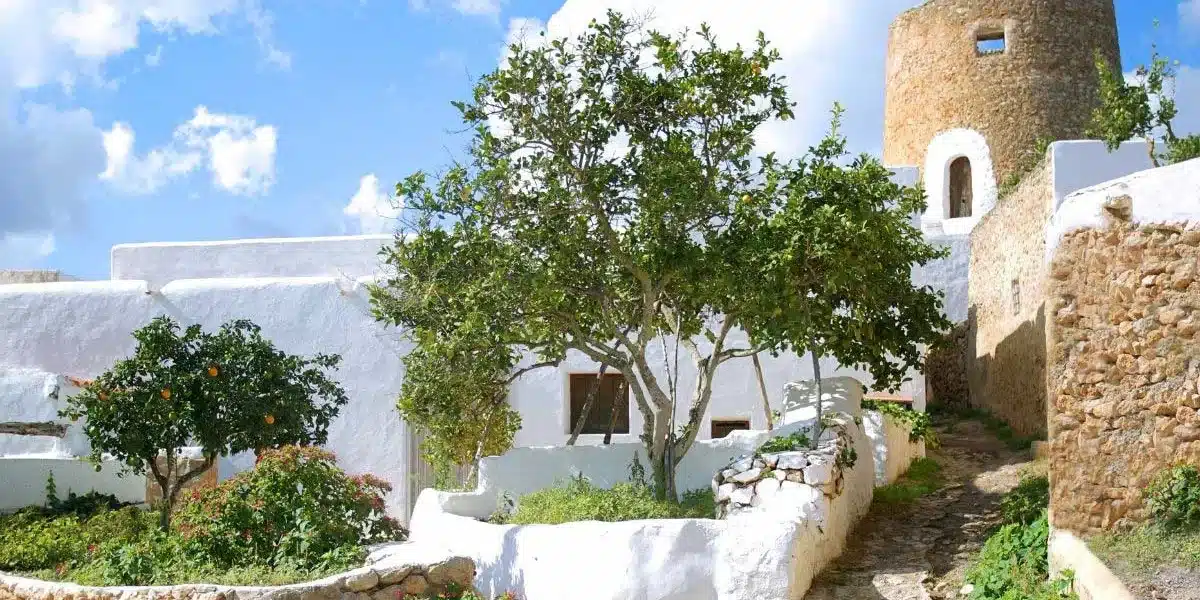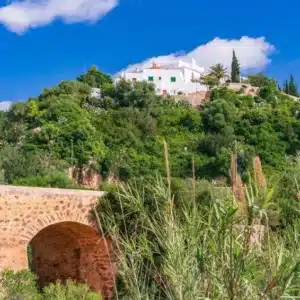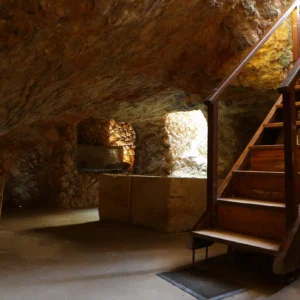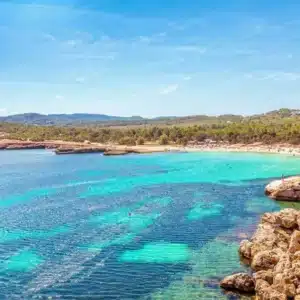Ibizan architecture instantly evokes images of whitewashed houses standing against the blue sky and green landscapes. These traditional structures, scattered across the island’s countryside and old towns, are integral to its identity. But why are these Ibizan buildings always painted white? The answer lies in a combination of historical, practical, and cultural factors that make Ibiza’s white architecture not only aesthetic but essential.
Climate control: keeping cool in the Mediterranean heat
One of the main reasons behind the choice of white exteriors is Ibiza’s Mediterranean climate, which brings long, hot summers.
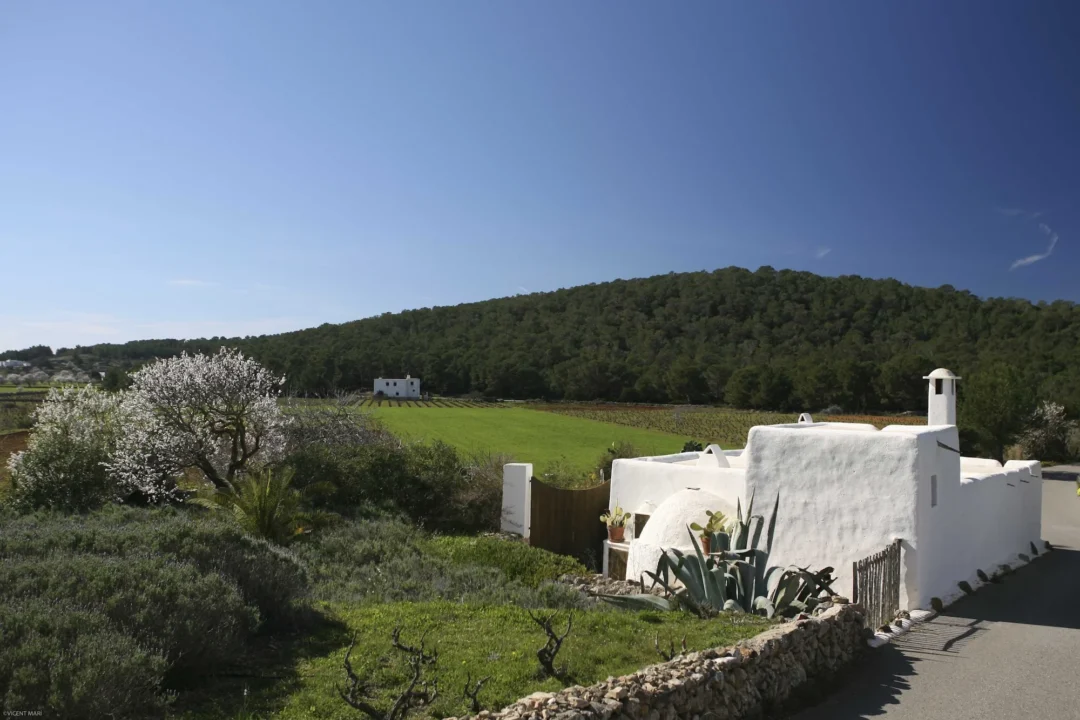
White surfaces reflect sunlight rather than absorb it, making buildings significantly cooler. This natural cooling system was crucial for comfort in times when air conditioning did not exist.
The lime coating used in these homes was an ingenious, affordable solution that locals relied on for centuries.
Local materials and cost-efficiency
The abundance of limestone on the island made it an easy and economical resource to produce limewash, the primary substance used to create the white finish. This material was mixed with water to create a simple yet effective paint.
Reapplying limewash annually was a common maintenance ritual, ensuring the buildings always had their characteristic bright white glow.
The cultural symbolism of white
The uniform white colour of Ibizan architecture has become a symbol of community and simplicity. The ‘White Island‘ nickname is rooted in this traditional design choice. In addition to being functional, the whitewashed homes convey a message of modesty and connection to nature, aligning with the island’s laid-back essence.
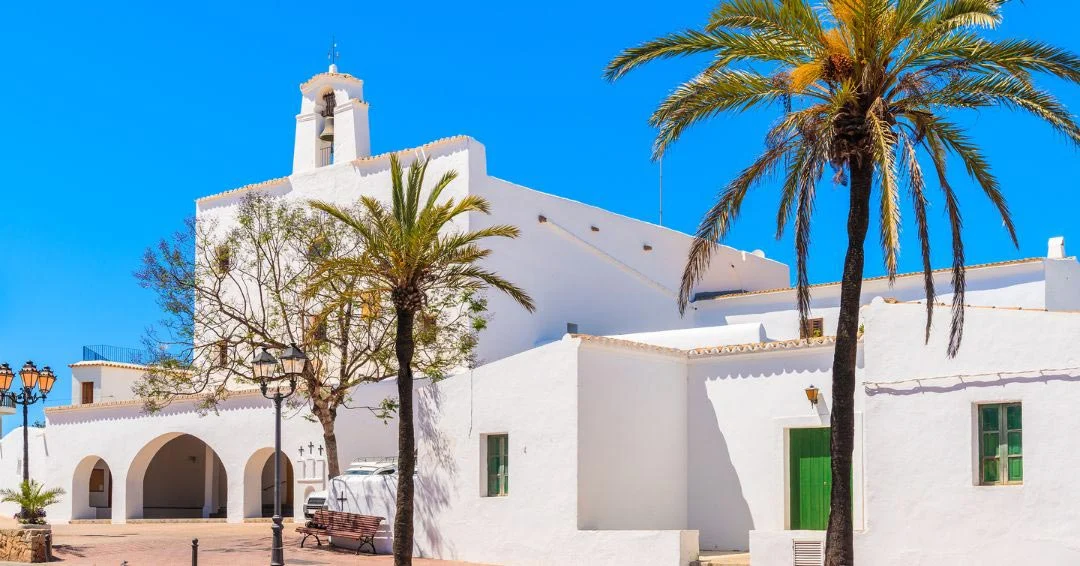
The artistic inspiration behind these buildings has influenced painters and photographers for decades. The famous Ibizan painter Vicente Ferrer Guasch captured the harmony between these white structures and the island’s natural surroundings in his iconic works.
Historical and architectural influences
The architecture of traditional Ibizan houses, or cases pageses, draws influence from multiple cultures. The rectangular, modular structure and thick stone walls covered in white limewash echo design elements from Assyrian, Egyptian, and Mediterranean traditions.
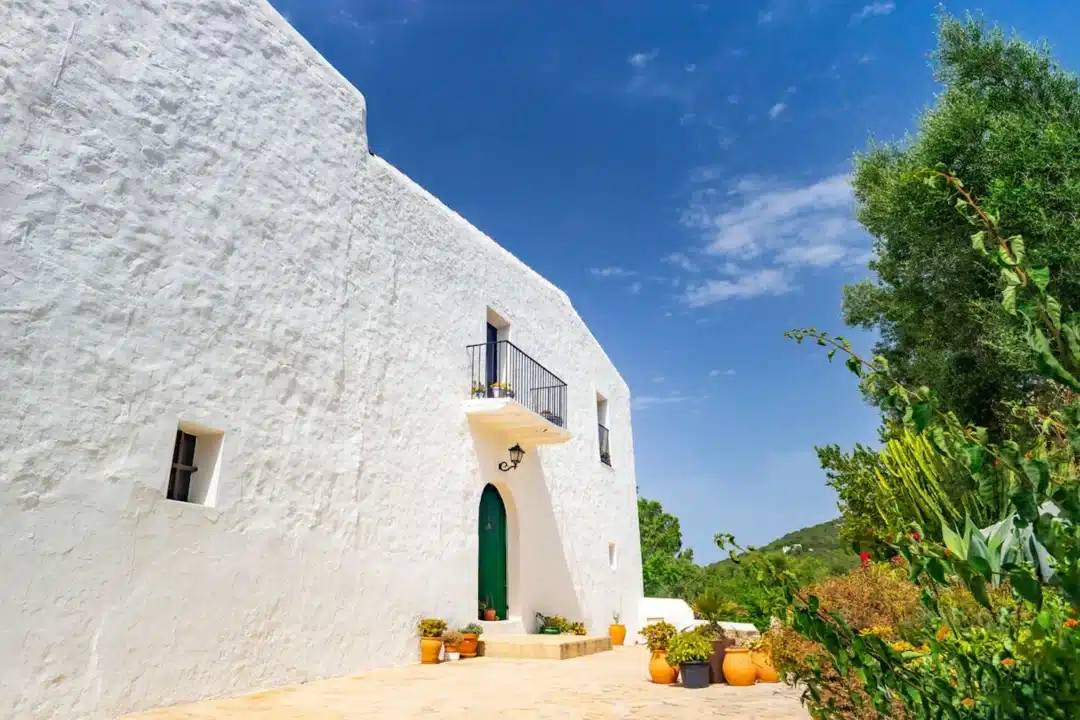
The use of flat roofs and wooden beams reflects the adaptability of local builders, who created homes that could be expanded by adding new rooms over time.
Health and hygiene benefits of limewash
Limewash was not only used for its cooling properties but also for its antibacterial qualities. Its alkaline composition prevented the growth of bacteria and fungi, ensuring cleaner and healthier living environments. This benefit made lime an invaluable tool for households and contributed to the long-standing tradition of annual re-coating.
Harmony with the landscape
The choice of white in Ibizan architecture blends seamlessly with the natural surroundings. Whether nestled among olive groves, almond orchards, or by the coastline, these homes stand out while still feeling at home in their environment.
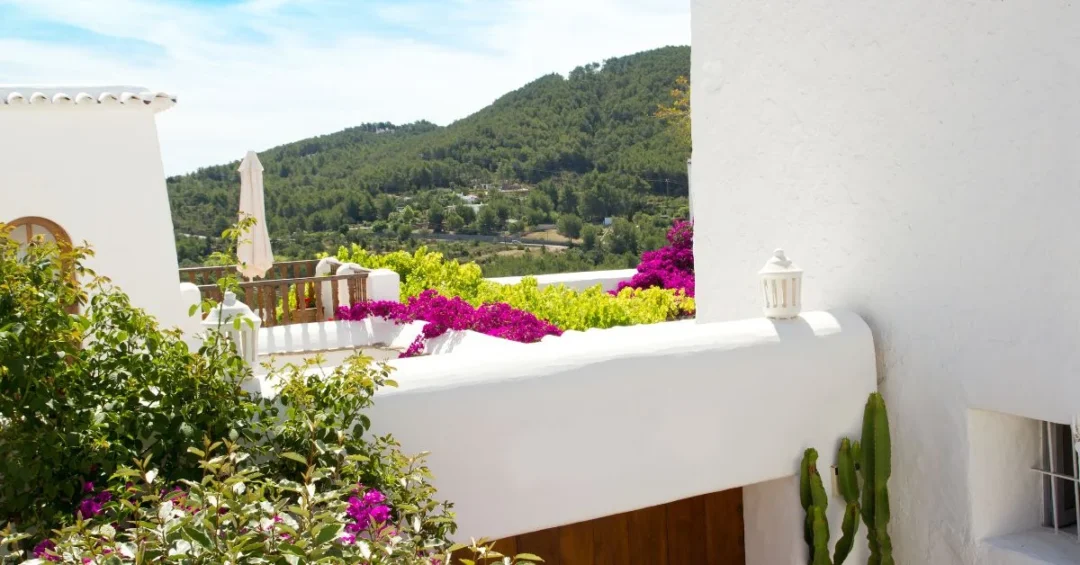
This aesthetic harmony between structure and setting is a defining characteristic of Ibiza’s cultural heritage.
Preservation of tradition and identity
Even in modern times, the tradition of maintaining whitewashed buildings remains a proud local practice. Whether it’s the buildings in the UNESCO World Heritage Site of Dalt Vila or rural farmhouses in the countryside, these buildings are protected and maintained as part of Ibiza’s identity.
Visitors strolling through the cobblestone streets of Dalt Vila or exploring secluded houses in the countryside are reminded of the timeless appeal of these white structures of the Ibizan architecture.
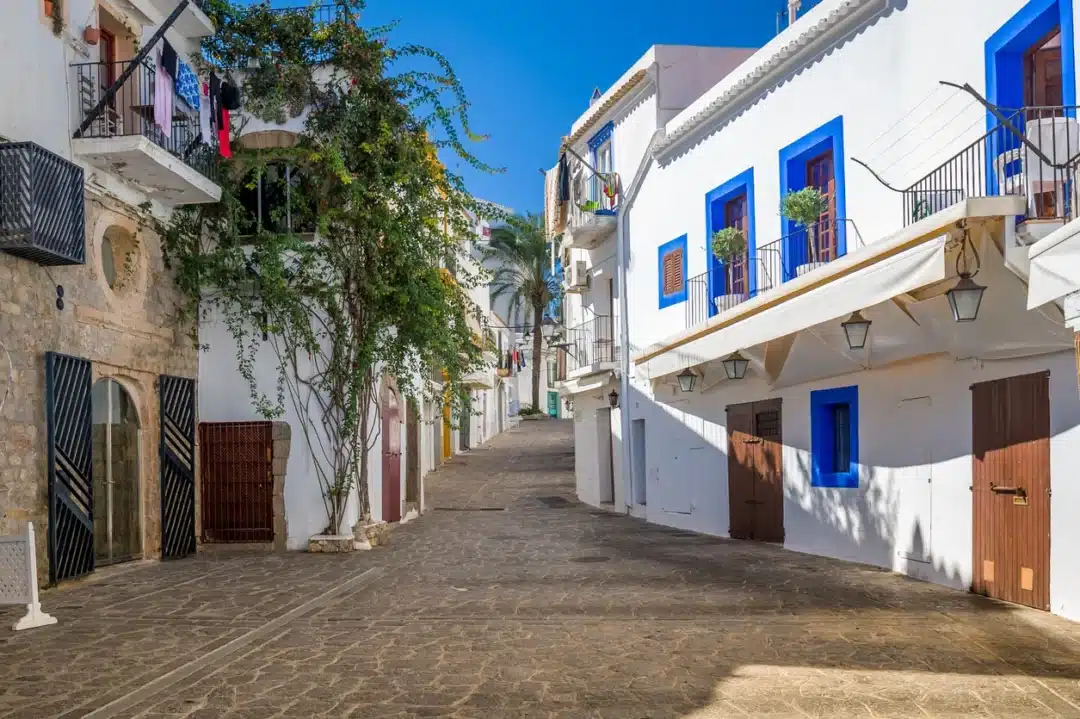
Exploring Ibiza’s whitewashed charm
For those who wish to experience the beauty of Ibizan architecture firsthand, there are many places to visit:
- Dalt Vila: the historic walled city offers narrow streets lined with beautifully maintained white houses.
- Countryside houses: venture into the rural areas to admire traditional farmhouses surrounded by lush landscapes.
Experiencing these iconic white buildings helps visitors understand the deeper connection between the architecture, the culture, and the history of Ibiza.
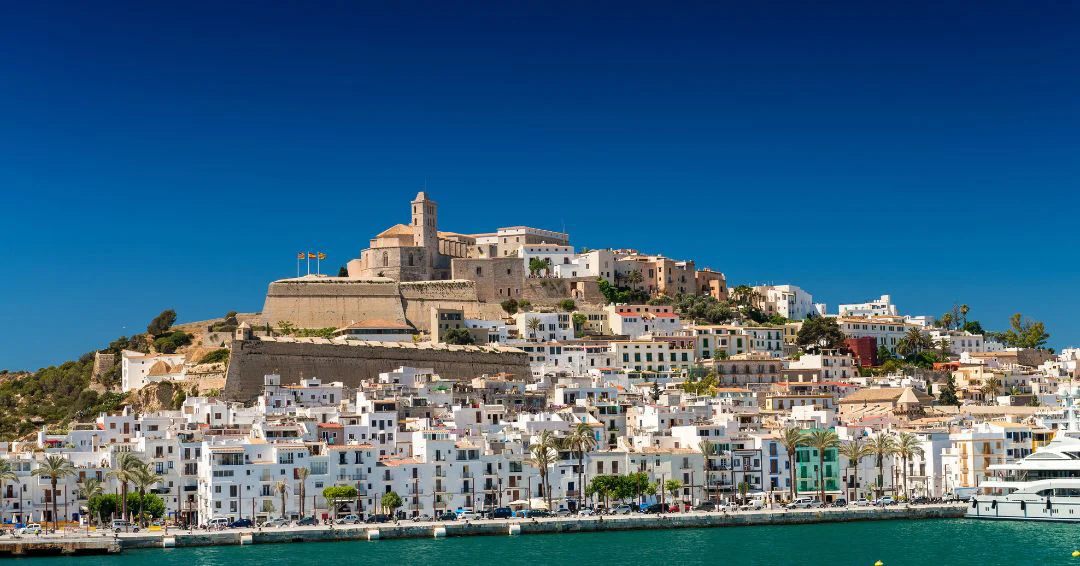
The whitewashed houses of Ibiza are more than just a pretty postcard image; they are a reflection of the island’s resilience, adaptability, and respect for tradition. From their cooling efficiency to their symbolism of community and purity, these structures encapsulate the spirit of Ibiza.
For travellers and architecture lovers, learning about the origins and purposes of Ibiza’s white buildings enriches the experience of exploring the island. Whether walking through the streets of Ibiza Town or admiring rural homes, these whitewashed houses tell the story of a unique and enduring cultural heritage.
